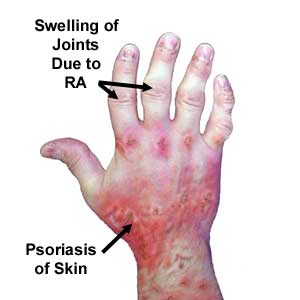Psoriatic Arthritis occurs in 5% of patients with Psoriasis and I commonly encounter this disease in both my The Woodlands dermatology and Conroe dermatology offices. Pustular Psoriasis is the most common type of Psoriasis in which patients experience Psoriatic Arthritis. Approximately 50% of patients have the HLA-B27 genetic marker which is seen in other forms of inflammatory arthritis, but Psoriatic arthritis is a seronegative type of arthritis in which there is not a specific biologic marker that can be tested. Thus, Psoriatic Arthritis can be confused with Rheumatoid Arthritis as there are many overlapping features of both diseases. The distal interphalangeal joint involvement is unique to Psoriatic Arthritis and 95% of patients will experience peripheral joint disease, whereas only 5% of patients will have axial spine involvement. There are 5 types of Psoriatic Arthritis: 1. Assymetric Oligoarthritis 2. Symmetrical Polyarthritis 3. Distal Interphalangeal Arthritis 4. Arthritis Mutilans 5. Spondylitis with or without Sacroilitis. Assymetrical Oligoarthritis is the most common type of Psoriatic Arthritis. Patients develop dactylitis in which the fingers and toes develop a “sausage” like appearance. The tendons can also be affected resulting in an esthenitis. A larger joint such as the knee can also be involved. Symmetrical Polyarthritis is very similar to Rheumatoid Arthritis involving the hands, feet, wrists and ankles. It is one of the more common types of Psoriatic Arthritis as well. Distal Interphalangeal Arthritis is a very characteristic form of Psoriatic Arthritis in which the joint near the nail bed is affected. Patients can develop inflammation of the nail fold called paronychia as well. Arthritis Mutilans is very rare but can lead to bone loss in which a “pencil in cup” deformity occurs on x-ray. Spondylitis with or without Sacroilitis occurs in which the vertebrae of the spine are affected. Treatment of Psoriatic Arthritis usually involves a rheumatologist and the use of systemic therapy such as Methotrexate and/or the Biologics.
April 2, 2011




